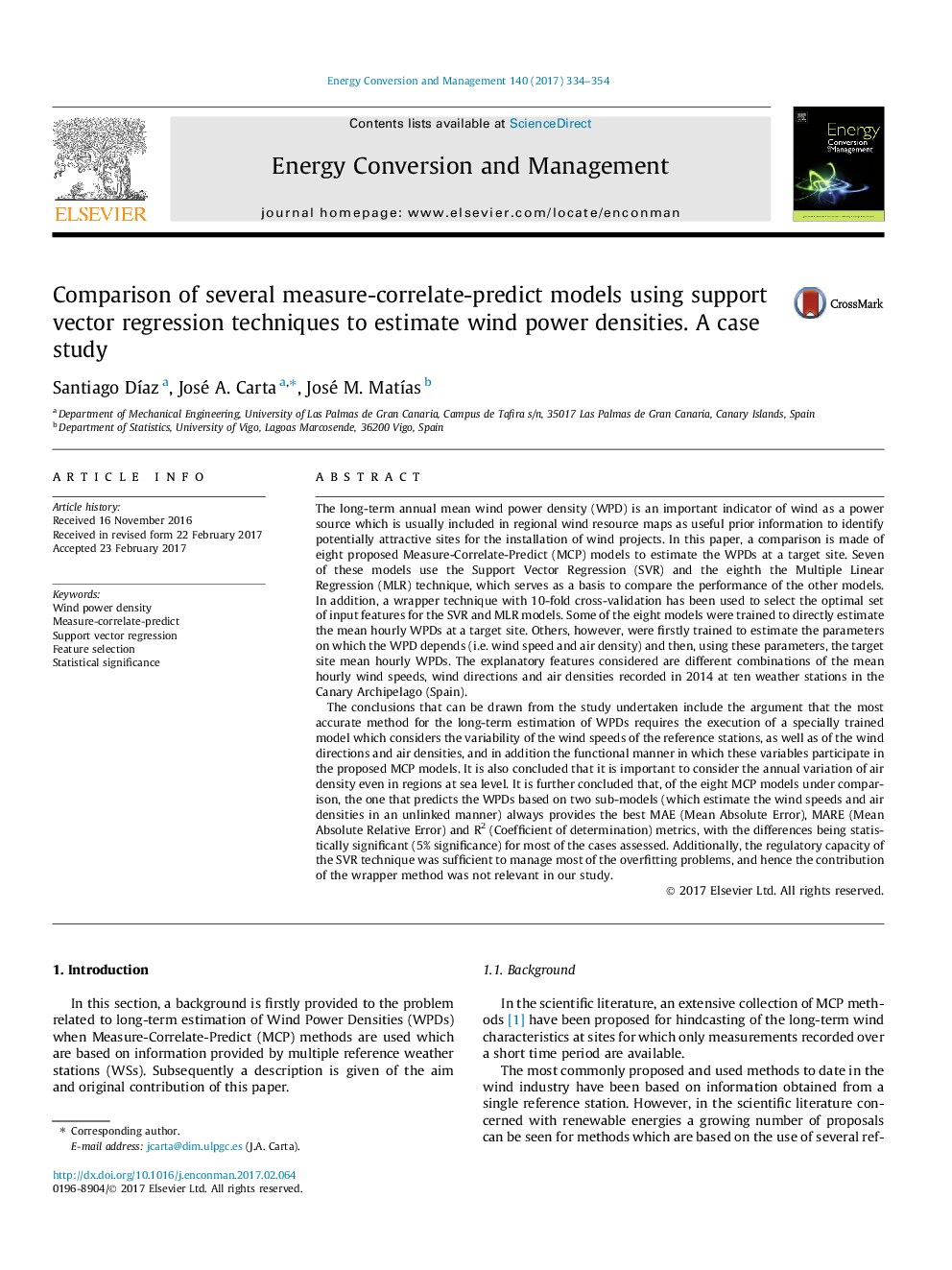| Article ID | Journal | Published Year | Pages | File Type |
|---|---|---|---|---|
| 5012863 | Energy Conversion and Management | 2017 | 21 Pages |
Abstract
The conclusions that can be drawn from the study undertaken include the argument that the most accurate method for the long-term estimation of WPDs requires the execution of a specially trained model which considers the variability of the wind speeds of the reference stations, as well as of the wind directions and air densities, and in addition the functional manner in which these variables participate in the proposed MCP models. It is also concluded that it is important to consider the annual variation of air density even in regions at sea level. It is further concluded that, of the eight MCP models under comparison, the one that predicts the WPDs based on two sub-models (which estimate the wind speeds and air densities in an unlinked manner) always provides the best MAE (Mean Absolute Error), MARE (Mean Absolute Relative Error) and R2 (Coefficient of determination) metrics, with the differences being statistically significant (5% significance) for most of the cases assessed. Additionally, the regulatory capacity of the SVR technique was sufficient to manage most of the overfitting problems, and hence the contribution of the wrapper method was not relevant in our study.
Keywords
Related Topics
Physical Sciences and Engineering
Energy
Energy (General)
Authors
Santiago DÃaz, José A. Carta, José M. MatÃas,
